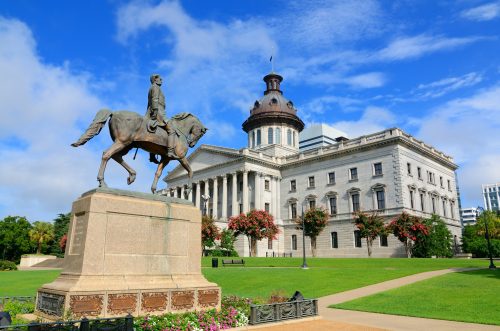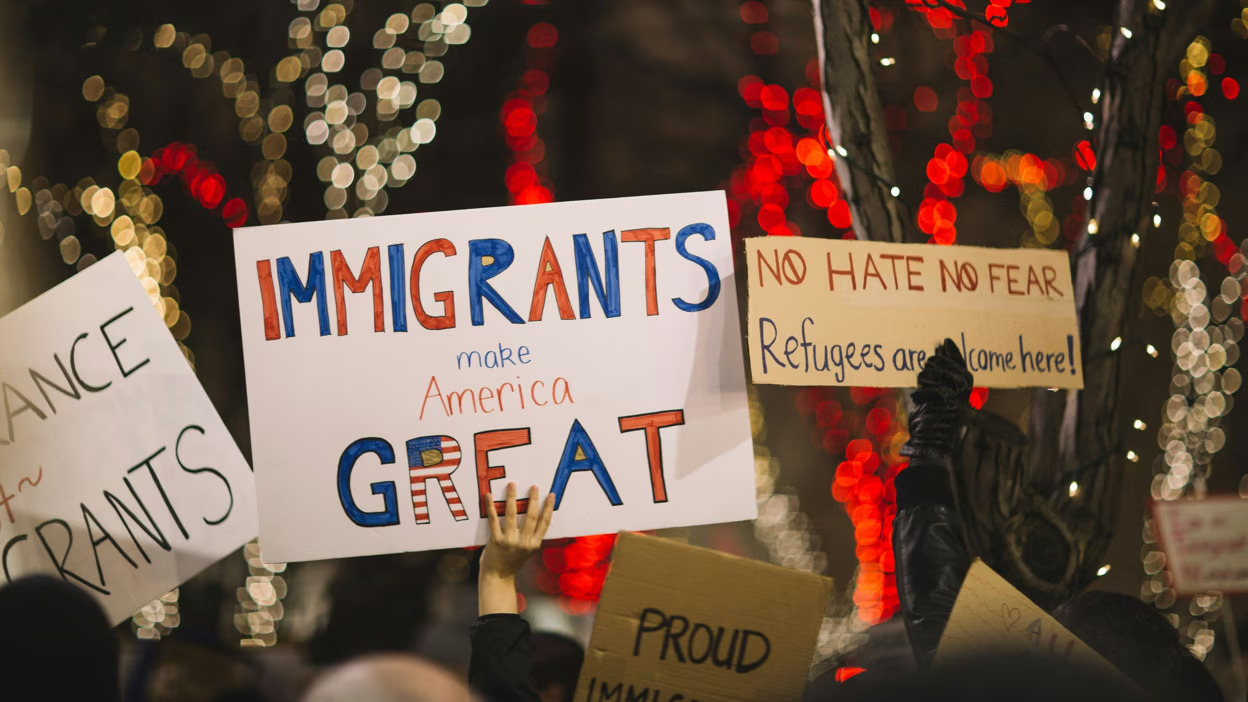In January 2020, the Trump Administration announced updates to its travel ban enacted in 2017 to include six additional countries. Taking effect in late February 2020, the new restrictions will bar immigrants from Nigeria, Myanmar, Eritrea, and Kyrgyzstan from obtaining permanent residency visas or “Green Cards.” It also will ban immigrants from Sudan and Tanzania from obtaining visas through the diversity lottery program. The new changes, however, will not affect students or temporary workers with highly specialized skills.
The new restrictions will impact nearly a quarter of the people on the African continent. Closer to home, it will also affect more than 645,000 immigrants in the United States. This includes more than 336,000 naturalized U.S. citizens who will no longer be able to reunite with family living abroad. The reasoning behind the new travel ban comes ostensibly from security concerns raised by the Department of Homeland Security about how each country shares terrorism-related information with the United States. For Nigeria, the country most affected by the ban, DHS claims there to be an “elevated risk and threat environment.” This is despite Nigeria’s active partnership with the U.S. military and this productive trade and economic relationship as the largest economy in Africa with the United States.
While new travel ban’s full impact won’t known until it goes into effect, it’s likely that there will be significant economic costs. Given the characteristics of immigrants from newly banned countries already here, putting into question their future in the United States as well as barring similar immigrants from coming would hamstring the U.S. economy. These economic concerns only add to the humanitarian ones that stem from potentially barring refugees from places where there are ongoing refugee crises. This includes Myanmar, where ethnic minorities like the Karen and Rohingya continue live in fear of displacement and state-condoned violence.
To get an idea of the potential economic impact of the ban, we look to the latest data from the 2018 American Community Survey to investigate how immigrants from the targeted countries are already contributing to the U.S. economy.
The Economic Contributions of Immigrants from Ban-Affected Countries
In 2018, there were more than 645,000 immigrants from the six affected countries in the United States. While only a small share of the overall population, these immigrants are significant contributors to the U.S. economy. In 2018 alone, they earned almost $22.0 billion, paid more than $6.1 billion in taxes—including $4.0 billion in federal income taxes and $2.1 billion in state and local taxes. After taxes, these immigrants still held $15.9 billion in spending power. If we look at just non-U.S. citizens from these countries—those most in danger of having to eventually leave the United States—we find that they too were significant economic contributors, earning almost $5.7 billion and paying $1.4 billion in taxes in 2018 alone.
Table 1: Economic Contributions of Immigrants Affected by the Travel Ban, U.S. Total, 2018
| Naturalized Citizens | Non-Citizens | Total | |
| Household Income | $16.3 Billion | $5.7 Billion | $21.8 Billion |
| Total Taxes Paid | $4.7 Billion | $1.4 Billion | $6.1 Billion |
| --Federal Income Taxes Paid | $3.2 Billion | $847.4 Million | $4.0 Billion |
| --State and Local Taxes Paid | $1.6 Billion | $552.4 Million | $2.1 Billion |
| Spending Power | $11.6 Billion | $4.3 Billion | $15.9 Billion |
Source: NAE Analysis of 2018 1-year ACS survey data downloaded from IPUMS-USA (www.ipums.org).
Looking closer at immigrants from each country, we find that in 2018 there that more than half, more than 375,000, came from Nigeria. Immigrants from Myanmar follow, with 143,000. There were also 53,000 Sudanese immigrants, 43,000 from Eritrea, 19,000 from Tanzania, and 11,400 from Kyrgyzstan in the United States in 2018.
Table 2: Immigrants Affected by the Ban by Country of Birth, 2018
| Country of Birth | Naturalized U.S. Citizens | Non-Citizens | Total |
| NIgeria | 209,480 | 166,407 | 375,887 |
| Myanmar | 59,007 | 84,026 | 143,033 |
| Sudan | 30,578 | 22,647 | 53,225 |
| Eritrea | 20,593 | 22,325 | 42,918 |
| Tanzania | 11,360 | 8,041 | 19,401 |
| Krygyzstan | 5,885 | 5,514 | 11,399 |
| Total | 336,903 | 308,960 | 645,863 |
Source: NAE analysis of 2018 1-year ACS data downloaded from IPUMS-USA (www.ipums.org).
As the largest group, Nigerian immigrants also have the largest economic footprint, with Nigerian immigrant households earning almost $14.3 billion and paying more than $2.7 billion in federal income taxes and $1.4 billion in state and local taxes in 2018 alone. This outsized economic productivity is due in part by their high levels of educational attainment.
Despite rhetoric from the Administration, the data reveal that Nigerian immigrants are actually some of the most well-educated in the United States. In 2018, half of all immigrants from Nigeria hold at least a bachelor’s degree and nearly 1 in 4 hold an advanced degree. Moreover, Nigerian immigrants are extremely active in the healthcare sector—the industry expected to expand the most in the next decade. More than 1 in 3 Nigerian workers work in the healthcare industry, including more than 23,700 registered nurses, almost 13,000 nursing assistants, and nearly 6,000 doctors and physicians.
Table 3: Economic Impact of Nigerian Immigrants in the United States and Texas
| Texas | United States | |
| Household Income | $2.6 Billion | $14.3 Billion |
| Total Taxes Paid | $660.1 Million | $4.1 Billion |
| --Federal Income Tax Paid | $437.4 Million | $2.7 Billion |
| --State and Local Taxes Paid | $222.7 Million | $1.4 Billion |
| Spending Power | $1.9 Billion | $10.2 Billion |
Source: NAE analysis of 2018 1-year ACS data downloaded from IPUMS-USA (www.ipums.org).
- Less than High School Diploma
- High School Diploma & Some College
- Bachelor's Degree
- Advanced Degree
Figure 1: Educational Attainment, Nigerian Immigrants, 2018
| Nigerian Immigrants | 13.5 | 36.6 | 26.8 | 23.1 |
Source: NAE analysis of 2018 1-year ACS data downloaded from IPUMS-USA (www.ipums.org).
Source: NAE analysis of 2018 1-year ACS data downloaded from IPUMS-USA (www.ipums.org).
At a time when 10,000 Americans age into retirement every day and the demand for healthcare workers is at an all time high, stemming the supply and encouraging the departure of appropriately skilled workers goes against the interests of the U.S. economy. Nigerians are more likely to be STEM workers—those in science, technology, engineering, or math—than the overall U.S. population. In 2018, 8.1 percent of all Nigerian immigrant workers were STEM workers, while just 6.6 percent of all U.S. workers were. In an ever more technologically driven and innovation focused economy, STEM workers are necessary for the U.S. economy to remain competitive with its rivals.
Table 4: Top Occupations for Nigerian Immigrants in the United States, 2018
| Occupation | Number of Nigerian Immigrant Workers | Share of all Nigerian Immigrant Workers |
| Registered Nurses | 23,720 | 9.8% |
| Nursing Assistants | 12,846 | 5.1% |
| Personal Care Aides | 10,110 | 4.0% |
| Licensed Practical and Vocational Nurses | 7,763 | 3.1% |
| Retail Salespersons | 6,074 | 2.4% |
| Physicians | 5,943 | 2.4% |
| Taxi Drivers | 5,891 | 2.4% |
| Security Guards | 5,166 | 2.1% |
| Misc. Managers | 5,083 | 2.0% |
| Total | 250,423 |
Source: NAE analysis of 2018 1-year ACS data downloaded from IPUMS-USA (www.ipums.org).
At the individual state level, Texas would be the most affected by the new travel ban, having the most immigrants from these six countries of all states at 118,000 residents. Much of this is due to the state’s large Nigerian immigrant population, the largest of any state in the country with more than 85,500 living in Texas. In 2018, immigrants from affected countries in Texas paid more than $810.0 million in taxes (including $284.0 million in state and local taxes). Together they held about $2.5 billion in spending power across the state. This economic clout allows them to pay for goods and services, invest and support U.S. businesses there by boosting their local economies as well as the U.S. economy in general.
Table 5: Economic Impact of Immigrants Affected by the Ban, Texas, 2018
| Naturalized U.S. Citizens | Non-Citizens | Total | |
| Household Income | $2.0 Billion | $1.2 Billion | $3.3 Billion |
| Total Taxes Paid | $529.4 Million | $284.3 Million | $813.7 Million |
| --Federal Income Taxes Paid | $354.7 Million | $174.8 Million | $529.6 Million |
| --State and Local Taxes Paid | $174.7 Million | $109.5 Million | $284.1 Million |
| Spending Power | $1.5 Billion | $919.1 Million | $2.5 Billion |
Source: NAE analysis of 2018 1-year ACS sample data downloaded from IPUMS-USA (www.ipums.org).
There are other nations that do not cooperate with the United States on security or terrorism-related matters, but they have not been singled out. This has led some to question the Administration’s justifications for the new ban while pointing out the diplomatic and economic fallout that could ensue. Lai Mohammed, Nigeria’s Minister of Information and Culture, responded to the proposed updates and the inclusion of Nigeria, stating, “[Nigeria] has committed a lot of resources to fight terrorism. Any travel ban cannot but be inimical to the growth of the country.” Although the U.S. Supreme Court ruled the grounds for the ban to be legitimate, civil rights groups continue to challenge the ban and more arguments will likely emerge as the ban is expected to take effect.
Whatever the outcome, should the new travel ban take effect, the data show substantial social and economic costs are likely. Shutting the door to similar immigrants from these countries, especially Nigeria, would effectively shortchange the U.S. economy in the future and disrupt hundreds of thousands of lives and livelihoods today.




